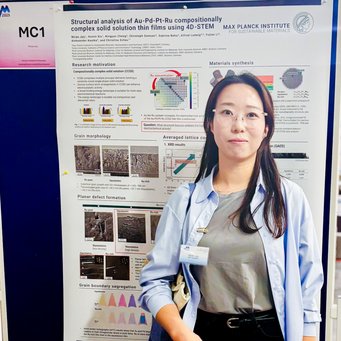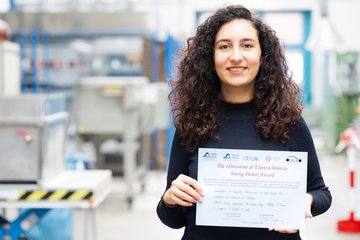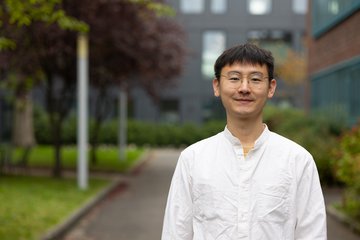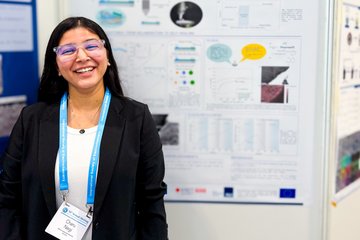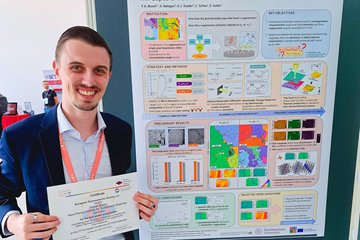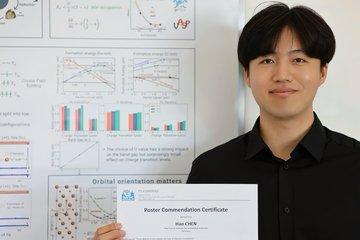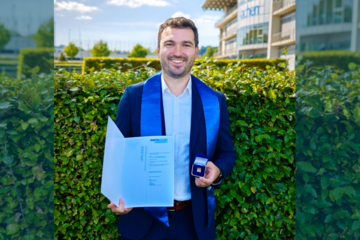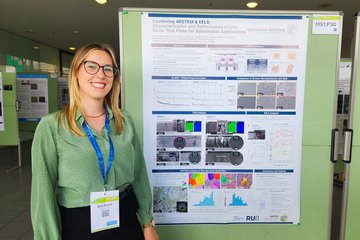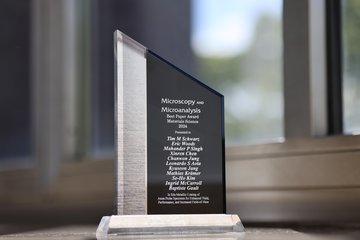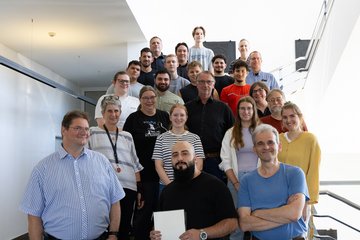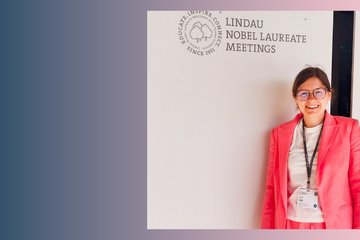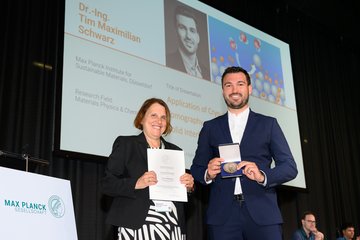Best Poster Award for Miran Joo
Understanding the atomic structure of complex alloys for better catalysts
At a glance:
- Award: Dr. Miran Joo has been awarded the Best Poster Award presented at the “Women In Electron Microscopy” networking event that took place from 8-10 October 2025 at the Forschungszentrum Jülich.
- Research focus: Understanding the atomic structure of compositionally complex solid solution thin films.
- Impact: Advanced materials for electrocatalytic applications, such as energy conversion or fuel cells.
- Methods used: Combination of four-dimensional scanning transmission electron microscopy with atom probe tomography and X-ray diffraction.
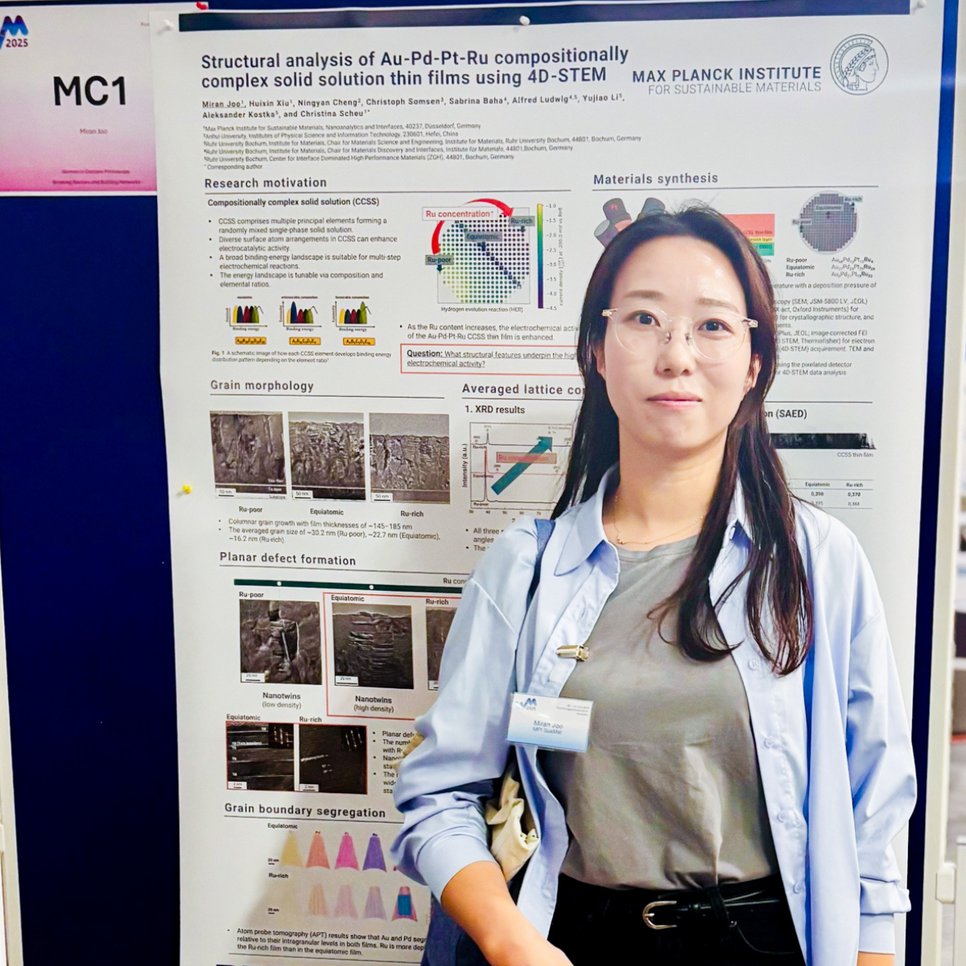
Dr. Miran Joo, postdoctoral researcher at the Max Planck Institute for Sustainable Materials (MPI-SusMat), has been awarded the Best Poster Award for her research on understanding the atomic structure of compositionally complex solid solution (CCSS) thin films. Her poster, presented at the “Women In Electron Microscopy” networking event that took place from 8-10 October 2025 at the Forschungszentrum Jülich, highlights how advanced microscopy can help reveal the atomic structure of promising electrocatalytic materials.
“I’m delighted to be part of this conference and surrounded by such passionate, energetic female scientists, and honoured to receive the Best Poster Award”, says Joo. She is one of two awardees of more than 100 event participants. Unlike conventional alloys that typically rely on one or two main elements, CCSS alloys are made of several elements mixed in nearly equal proportions. Their unusual composition gives rise to exceptional chemical and physical properties, making them highly attractive for electrocatalytic applications, such as energy conversion or fuel cells. However, their performance is strongly linked to their atomic-scale structure, which remains challenging to study. To tackle this, Joo used four-dimensional scanning transmission electron microscopy (4D-STEM) to analyse the phase and orientation in gold-palladium-platinum-ruthenium (Au-Pd-Pt-Ru) thin films. The films were fabricated via magnetron sputtering at room temperature, creating a compositional gradient that allowed systematic structural analysis.
The research revealed that all samples form a face-centred cubic (FCC) solid solution with a strong (111) texture. As the amount of ruthenium increased, more planar defects appeared, which is a sign of growing lattice strain. Combining 4D-STEM with atom probe tomography (APT) and X-ray diffraction (XRD), Joo mapped how different elements segregate at grain boundaries and how this affects the films’ nanostructure and mechanical stability. “Understanding how atomic-scale structure and defects evolve in these materials is essential to link their structure to catalytic performance,” explains Joo. These findings pave the way for an advanced design of high-performance, compositionally complex catalysts for sustainable energy technologies.
The conference brought together women from different countries, institutions, and career stages, aiming to build a supportive community for women in the field of electron microscopy and to promote the next generation of female scientists. By fostering targeted networking, the conference encouraged participants to establish new professional relationships and collaborations.
